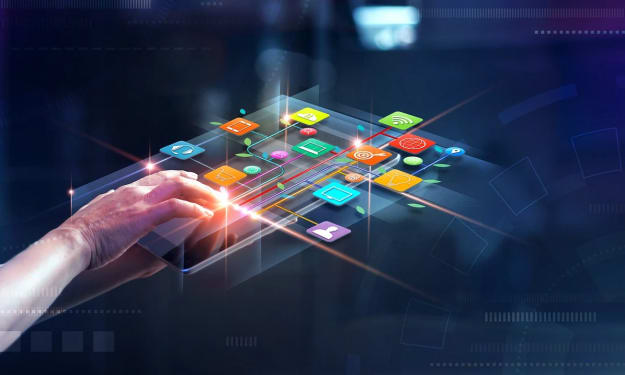
Augmented reality (AR) and mixed reality (MR) have revolutionized modern science. Nowadays, these cutting-edge technologies are widely used in different spheres of human life, and education is not an exception. AR and MR are especially helpful in training medical students as they allow them to enhance their experience and achieve better results. That is why healthcare software development companies closely cooperate with leading healthcare facilities and medical universities in search of efficient digital solutions. In this article, we’ll touch upon the benefits and uses of AR and MR in healthcare education.
AR and MR as modern immersive technologies
Augmented reality changes our perception of the world by superimposing digital images over our surroundings. This technology is especially effective in combination with mixed reality which is a significant step forward as it allows users not only to watch but also manipulate computer-generated objects. In the healthcare industry, AR and MR are used in neurosurgery, dentistry, pharmacology, and many other areas. They have also been introduced in many medical universities as effective tools considerably improving the quality of education.
AR/MR uses for educational purposes
- Anatomy studies.
With the help of AR medical students explore the human body without practicing on plastic models or cadavers. Inner organs are shown in motion, which is impossible in the case of lifeless objects. Thus, one can get comprehensive knowledge of anatomy. AR provides additional information by displaying text over plastic skeletons. It is easy to learn the names of bones or bodily parts, their meaningful characteristics, and their functions. Interactive or animated 3D models allow students to see inside a human heart or a skull or manipulate them the way they need with the help of MR technology.
- Gaining experience in surgery.
No doubt, surgery is an area of special responsibility. To perform operations successfully, surgeons need to accumulate experience and train their muscle memory which is possible only with constant practice. However, letting inexperienced students into an operating theatre is extremely risky. Moreover, not every patient is ready to consent to such an operation. On the other hand, practicing on cadavers to develop precision of movements is also different from authentic operations as they do not respond the way living people do. Thus, the combination of AR and MR with their vast potential to perfect surgical skills is a good option. With the help of such a headset as Microsoft HoloLens 2, young surgeons can perform various surgical tasks. Animated images are overlaid over manikins, which creates an impression of a real operation.
- Emergency personnel training.
Not only medical workers can profit from AR training. Sometimes, firefighters, volunteers, or policemen must help the injured by sustaining their lives until the arrival of an ambulance team. If the emergency site is situated at a considerable distance from healthcare facilities, it is vitally important to act promptly. AR first aid training helps to master necessary skills by projecting an image of a virtual patient with injuries over a manikin. For example, one can perform cardiopulmonary resuscitation (CPR), learn how to deal with epilepsy seizures or stop bleeding, etc.
Advantages of AR and MR in medical education and training
- Realistic experience.
Computer-generated images of inner organs, tissues, and limbs look entirely realistic. By examining them one can get a perfect notion of how the human body functions.
Safety.
Students gain the necessary knowledge without practicing on real patients. It excludes the risk of serious or fatal mistakes. Thus, AR and MR reduce anxiety for both medical students and patients.
- Efficiency.
AR and MR apps allow students to practice as often as they need. By repeating exercises numerous times, they master their skills. The more you practice, the better results you achieve – this slogan proves efficient in any area of expertise. But for medical staff constant practice is especially important as they deal with human lives.
- Remote assistance.
AR lets medical students communicate not only with their professors but with leading healthcare specialists situated elsewhere. Remote professionals can assist them or give instructions in real time.
- Cost-effectiveness factor.
AR and MR apps, costly as they may seem, in the long term prove less expensive than disposable materials, cadavers, or specimens. The latter need to be supplied on regular basis and are not always easy to obtain in sufficient quantity.
Conclusion
Nowadays, more and more universities are introducing courses implying AR and MR technologies in their curricula. Thus, they need to order custom medical software which will meet all their requirements. AR and MR will change the whole process of education making it much more efficient and enjoyable for students.






Comments
There are no comments for this story
Be the first to respond and start the conversation.